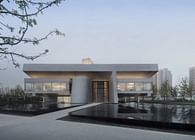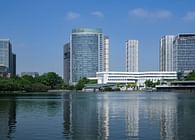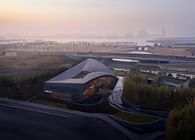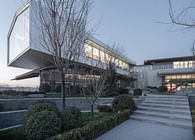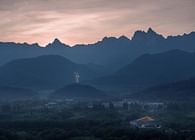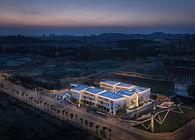
The "Shizikou" site in Suzhou is located on the east side of Cang Street in the ancient city of Suzhou, near Pingjiang Road. This site was once the location of the Suzhou Shizikou Prison, known as one of the "three major prisons of the Republic of China." In 1937, the "Seven Gentlemen" were prosecuted by the Nationalist government, and Soong Ching-ling, He Xiangning, and Hu Yuzhi launched the "Save the Nation by Imprisonment" movement. Additionally, Chen Gongbo, Chu Minyi, Miao Bin, and others were executed here, and Chen Bijun, wife of Wang Jingwei, was also detained at this site. Today, the site retains only a Republican-era office building and part of the surrounding wall. As time has passed, the paint has peeled off, revealing the blue brick walls and reflecting the Western influence on Chinese architecture at that time. The old settlements on the east and north sides of the site have become ruins and will be replaced by a new Jiangnan-style street in the future.
The original intention of the project is to continue historical memory and preserve the collective memory of the ancient city's residents. The significance of a place is dependent on people's memory of its space. For the residents of Suzhou, the open spaces formed by streets and courtyards are part of their shared memory. The design aims to organically preserve these memories, allowing future generations to benefit from them, and to stimulate the potential of the site without destroying the historical value of the original buildings. Within the site, there is a century-old cypress tree, which has witnessed more than a century of history and inspired the design. The designers took the cypress as the axis to form a continuous space, engaging in dialogue with the external environment and creating a centripetal courtyard that opens to the south city square and metro entrance, promoting dialogue between contemporary urban life and historical buildings.
In the dialogue between old and new buildings, the expanded exhibition hall acts as a link, connecting the office building, the cypress tree, and external spaces. It represents the extension and growth of the office building in the dimension of time. The expansion hall retains the characteristics of the original building but maintains its independence, creating a new whole by visually blending the old and new buildings. The new building's roof grows from the office building's ridge line, transitioning through rotation and merging into a single-sloped curved surface typical of Suzhou style, bridging the gap between Republican and traditional Suzhou architecture. The roof design is controlled parametrically to adjust the ridge line's angle, observing its shape changes and its relationship with the office building's roof, finding the best fit between concept and application. The project occupies a corner of the Renheng Cang Street commercial plaza, using changing corner designs to allow people to feel the power of space during visual transitions.
In terms of materials, the old buildings' renovation continues using blue bricks to achieve a restoration as close to the original as possible. The façade of the expanded part uses terracotta bricks, inheriting the texture of the office building's blue brick façade while creating a new tactile perception. The brick texture extends from the roof to the ground, creating a serene and elegant space. The curved glass brick entrance blurs the spatial relationship between the internal office building and the external square, reflecting historical memories inside and modern life outside. From blue bricks to terracotta bricks to glass bricks, the expanded building achieves a continuation and iteration of the old building's texture and feel. Structurally, the expanded exhibition hall uses reinforced concrete and steel trusses to fit the roof shape, meeting the requirements of large spans. Inside the glass brick wall is a curved glass curtain wall, ensuring the building's airtightness and thermal performance while maintaining a clean façade. Ultimately, the new site will transform the old office building into a historical and cultural exhibition hall, with the expanded part showcasing new planning achievements and becoming a distinctive restaurant, allowing the historical site to continue and inherit its legacy in a new function.
Status: Built
Location: Suzhou, CN
Firm Role: Architect
Additional Credits: Completion Year: 2020.07
Lead Architect丨Song Zhaoqing, Cen Ling
Design team 丨Chu Ziyuan, Guo Dan, Zhao Xiaoxue, Liu Zehua, Chen Dandan, Wu Wenqi, Zhu Xiaolei, Wang Yuge, Yu Xin, Gao Yaqun
Project location: Suzhou, China
Gross built area:2867㎡
Photo credit: CreatAR Images
Partner:
Construction drawing design丨Suzhou Urban Development Architectural Design Institute Co., Ltd.
Landscape design丨Cicada Landscape Architecture
Curtain wall design丨Shanghai CIMA Engineering Consulting Co., Ltd.
Interior design 丨Shenzhen Horizontal Space Design Co., Ltd.
Client: Suzhou Peninsula Yanlord Real Estate Co., Ltd.
Materials: Titanium-zinc Pane, Curved glass curtain wall, ceramic brick
Brands: France Titanium-zinc Panel, Shanghai Haojing Glass Co.Ltd, Shanghai Yaju Stone Co. Ltd.





